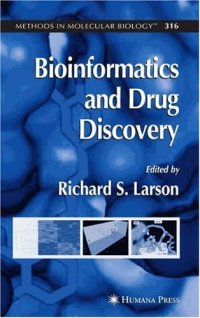
Ebook: Bioinformatics and Drug Discovery
- Genre: Biology // Molecular: Bioinformatics
- Tags: Pharmacy
- Series: Methods in Molecular Biology 316
- Year: 2006
- Publisher: Humana Press
- Edition: 1
- Language: English
- pdf
Many of the new technologies that are transforming drug discovery require a high degree of interdisciplinary expertise in physical science, life science, and computer science for bioinformatic analysis of their output. In Bioinformatics and Drug Discovery, a panel of researchers from academic and pharmaceutical laboratories describes readily reproducible bioinformatic methods to advance the drug discovery process from gene identification to protein modeling to the identification of specific drug candidates. The authors demonstrate these techniques, including microarray analysis, the analysis of genes as potential drug targets, virtual screening and in silico protein design, and cheminformatics, in a variety of practical situations. Because these technologies are still emergent, each chapter contains an extended introduction that explains the theory and application of the technology and techniques described. The protocols follow the successful Methods in Molecular Biology™ series format, each offering step-by-step laboratory instructions, an introduction outlining the principles behind the technique, lists of the necessary equipment and reagents, and tips on troubleshooting and avoiding known pitfalls.
Cutting-edge and highly practical, Bioinformatics and Drug Discovery makes it possible to apply in the research laboratory the powerful new technologies that promise to greatly improve and speed up the discovery of new drugs.
A collection of readily reproducible bioinformatic methods to advance the drug discovery process from gene identification to protein modeling to the identification of specific drug candidates. The authors demonstrate these techniques, including microarray analysis, the analysis of genes as potential drug targets, virtual screening and in silico protein design, and cheminformatics, in a variety of practical situations. Because these technologies are still emergent, each chapter contains an extended introduction that explains the theory and application of the technology and techniques described.